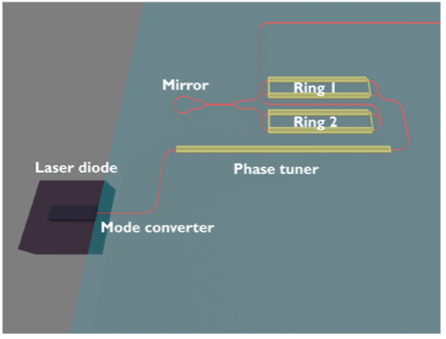Summary
The library of two-dimensional (2D) materials has recently grown to include topological insulators and semimetals. Their incorporation in special device geometries may lead to novel quantum electronics with enhanced functionalities. Weyl semimetals, in particular, offer the most robust form of topological protection. Recent results from our group indicate that Weyl nodes should be observable at room temperature in thin molybdenum ditelluride (MoTe2) and are furthermore tunable by changing dimensionality. Weyl nodes correspond to points of bulk band degeneracy and are separated in momentum space. In this joint project with Dr. Andrea Damascelli’s group at the University of British Columbia (UBC), we utilize micro-angle-resolved photoemission spectroscopy (micro-ARPES) to image in momentum space the Weyl nodes and surface arcs of MoTe2 and further investigate changes induced by lower dimensionality. Once the Weyl nodes are mapped, we perform transport measurements and utilize scanning photocurrent microscopy to image novel photogalvanic effects induced by the Weyl points in real space. We expect this project will pave the way for future materials exploration and device development that exploits the unique properties of 2D materials through combined ARPES and nanoscale device transport studies.

Figure 1. Sample device geometry. MoTe2 flakes of various thicknesses are transferred on prepatterned gold electrodes deposited on a hexagonal boron nitride (BN)/graphite (Gr) heterostructure and capped with single-layer hBN. The bottom layers provide an ultra-flat substrate for the MoTe2.
Related Content

Visible wavelength external cavity diode lasers in photonic integrated circuits for atomic technologies
Atoms can be controlled by manipulating their internal states using agile, quiet and reliable laser sources. An external-cavity diode laser (ECDL) is a crucial enabling technology to realize such laser sources since it allows for the narrowing of the linewidth of a laser diode and precise tuning of the laser frequency. This project aims to […]
April 19, 2023

Distributing Multimode Entanglement with Microwave Photons
Microwaves have enabled numerous classical technologies, in part because they propagate through air with little energy loss.
March 6, 2017

Enabling Next-Generation Sustainable Computing through Novel Multi-Valued-Logic Quantum Devices
As the demand for digital services grows, so does the need for data centres and transmission networks. Unfortunately, these data systems consume vast amounts of energy, resulting in nearly 1% of all energy-related greenhouse gas emissions. This project aims to invent novel quantum devices for highly energy-efficient computing that may help reduce the global digital […]
June 12, 2023

Zero-Dimensional Quantum Materials for the Next Generation of Highly-Selective Chemical Sensors
Summary Heavy metals are a major public health concern and their on-site detection in water supplies is not well served by existing lab techniques. We develop a new multi-modal platform comprising functionalized quantum dots of two-dimensional materials (2D-QDs) for the sensing of four highly-toxic heavy metal pollutants (arsenic, cadmium, lead and mercury). The zero-dimensional […]
March 11, 2019

